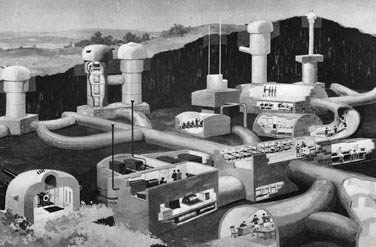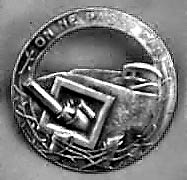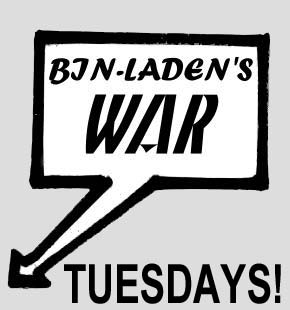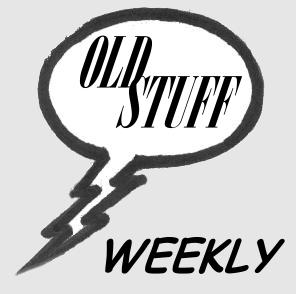
THE MAGINOT LINE
 ______Some countries learn the wrong lessons from wars and ignore changes in military technology and political reality.
______Some countries learn the wrong lessons from wars and ignore changes in military technology and political reality.
______Begun in 1929, the Maginot Line's conception could be traced back ten years, to the end of World War One. In the bloody aftermath of the Great War the French decided that they were going to stack the deck in their favor should their traditional enemy, Germany, decide to fight a rematch. They took two lessons from the war: that offensive actions were, by and large, failures, and that defensive fortifications and entrenchements prevented defeat.
 ______The Maginot Line, named after the Minister of War who promoted it, was meant to bring "high-tech" to trench warfare. Whereas the trenches of the Great War were for the most part improvised, the Maginot Line would be a well-planned system of concrete fortresses, complete with turreted artillery and pillboxes for machineguns. Underground tunnels connected the components (some of the tunnels stretched several kilometers) as well as vehicle parks, barracks, messhalls, powerplants and warehouses. Soldiers who could pull his shift, take a shower, grab some croissants at the mess and enjoy a movie, all in the comfort of his underground fort. The soldiers manning the fort even had their own beret badge, featuring a cannon sticking out of a fort.
______The Maginot Line, named after the Minister of War who promoted it, was meant to bring "high-tech" to trench warfare. Whereas the trenches of the Great War were for the most part improvised, the Maginot Line would be a well-planned system of concrete fortresses, complete with turreted artillery and pillboxes for machineguns. Underground tunnels connected the components (some of the tunnels stretched several kilometers) as well as vehicle parks, barracks, messhalls, powerplants and warehouses. Soldiers who could pull his shift, take a shower, grab some croissants at the mess and enjoy a movie, all in the comfort of his underground fort. The soldiers manning the fort even had their own beret badge, featuring a cannon sticking out of a fort.
______At a cost of 3 billion francs the French built 108 forts connected by over 100 kilometers of tunnels. The fortresses were built along the German and Italian frontiers, but not in front of Switzerland or Belgium. However, in 1936 the Belgians abrogated their defense treaty with France and the line was extended along their border too, but only in name. The Maginot Line along the Belgian border consisted of a series of pillboxes rather than fortresses.
______Naturally Hitler, being the total and complete b*****d that he was, didn't launch his 1940 invasion of France against the Maginot Line, with its well-protected soldiers and powerful armament. Oh no. The sneaky fink chose to attack through Belgium and take his chances with the handful of pillboxes the French had added as an afterthought. Hitler's primary invasion route was through the Ardennes Forest, which Maginot planners had previously identified as "impenetrable," making some members of the French General Staff wonder if Hitler chose to attack their just to embaress them.
 ______Critics like to point to the Maginot Line and call it a failure because it didn't protect France. The fact is, the line did exactly what it was supposed to do: prevent an invasion from the Italian and/or German frontiers. Mussolini's attack on France was a dismal failure and the few frontal attacks launched by the Germans were costly and ineffective as well. Even after the rest of France fell most of the fortresses held out, only to be surrendered when France decided to pull out of the War.
______Critics like to point to the Maginot Line and call it a failure because it didn't protect France. The fact is, the line did exactly what it was supposed to do: prevent an invasion from the Italian and/or German frontiers. Mussolini's attack on France was a dismal failure and the few frontal attacks launched by the Germans were costly and ineffective as well. Even after the rest of France fell most of the fortresses held out, only to be surrendered when France decided to pull out of the War.
______The problem wasn't just that the French had ignored the possibility that the Germans would violate Belgian neutrality (it's not as if they had ever done it before) or even that advances in military technology had tipped the balance in favor of the offense once again, with tanks and aircraft making the difference. The mistake the French made was that they were more concerned with PREVENTING DEFEAT than ACHIEVING VICTORY, a tradition that seems to be going on to this day. By making it clear that they had no intention of going on the offensive to preserve their country the French had ceded the initiative to the Germans, who used it to defeat France.
______
HOW DID THE RED BARON MARK HIS VICTORIES?







 ______Some countries learn the wrong lessons from wars and ignore changes in military technology and political reality.
______Some countries learn the wrong lessons from wars and ignore changes in military technology and political reality. ______The Maginot Line, named after the Minister of War who promoted it, was meant to bring "high-tech" to trench warfare. Whereas the trenches of the Great War were for the most part improvised, the Maginot Line would be a well-planned system of concrete fortresses, complete with turreted artillery and pillboxes for machineguns. Underground tunnels connected the components (some of the tunnels stretched several kilometers) as well as vehicle parks, barracks, messhalls, powerplants and warehouses. Soldiers who could pull his shift, take a shower, grab some croissants at the mess and enjoy a movie, all in the comfort of his underground fort. The soldiers manning the fort even had their own beret badge, featuring a cannon sticking out of a fort.
______The Maginot Line, named after the Minister of War who promoted it, was meant to bring "high-tech" to trench warfare. Whereas the trenches of the Great War were for the most part improvised, the Maginot Line would be a well-planned system of concrete fortresses, complete with turreted artillery and pillboxes for machineguns. Underground tunnels connected the components (some of the tunnels stretched several kilometers) as well as vehicle parks, barracks, messhalls, powerplants and warehouses. Soldiers who could pull his shift, take a shower, grab some croissants at the mess and enjoy a movie, all in the comfort of his underground fort. The soldiers manning the fort even had their own beret badge, featuring a cannon sticking out of a fort. ______Critics like to point to the Maginot Line and call it a failure because it didn't protect France. The fact is, the line did exactly what it was supposed to do: prevent an invasion from the Italian and/or German frontiers. Mussolini's attack on France was a dismal failure and the few frontal attacks launched by the Germans were costly and ineffective as well. Even after the rest of France fell most of the fortresses held out, only to be surrendered when France decided to pull out of the War.
______Critics like to point to the Maginot Line and call it a failure because it didn't protect France. The fact is, the line did exactly what it was supposed to do: prevent an invasion from the Italian and/or German frontiers. Mussolini's attack on France was a dismal failure and the few frontal attacks launched by the Germans were costly and ineffective as well. Even after the rest of France fell most of the fortresses held out, only to be surrendered when France decided to pull out of the War.